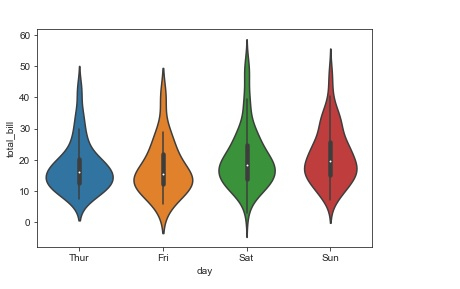
 Data Structure
Data Structure Networking
Networking RDBMS
RDBMS Operating System
Operating System Java
Java MS Excel
MS Excel iOS
iOS HTML
HTML CSS
CSS Android
Android Python
Python C Programming
C Programming C++
C++ C#
C# MongoDB
MongoDB MySQL
MySQL Javascript
Javascript PHP
PHP
- Selected Reading
- UPSC IAS Exams Notes
- Developer's Best Practices
- Questions and Answers
- Effective Resume Writing
- HR Interview Questions
- Computer Glossary
- Who is Who
Demonstrate the working of violin plots in Python?
If we wish to compare the data present within categories, box plots come into play. It is a way in which the data distribution in the dataset can be understood with the help of quartiles. It consists of vertical lines that extend from the boxes. These extensions are known as whiskers. These whiskers tells about how the data varies outside the upper and lower quartiles. This is why box plots are also known as whisker plots. Outliers in the data are plotted as individual points.
Violin plot is a combination of box plot with kernel density estimates (KDE). It is easier to analyse and understand how the data has been distributed. The wide portion of the violin indicates the higher density of data. The narrow portion of the violin indicates the lower density of data.
The inter-quartile range within a boxplot and the higher density portion of data fall within the same region in every category.
Syntax of violinplot function
seaborn.violinplot(x, y,data,…)
Let us understand how a violin plot can be used to plot data −
Example
import pandas as pd
import seaborn as sb
from matplotlib import pyplot as plt
my_df = sb.load_dataset('tips')
sb.violinplot(x = "day", y = "total_bill", data=my_df)
plt.show()
Output

Explanation
- The required packages are imported.
- The input data is ‘iris_data’ which is loaded from the scikit learn library.
- This data is stored in a dataframe.
- The ‘load_dataset’ function is used to load the iris data.
- This data is visualized using the ‘violinplot’ function.
- Here, the dataframe is supplied as parameter.
- Also, the x and y values are specified.
- This data is displayed on the console.

